What moon samples are there in China?
Author:Institute of Geological Earth Time:2022.07.13


What moon samples are there in China?
Wu Fuyuan Liu Qiangtian Hengji's published this article was published in the Journal of rocks 2022, Vol. 6, No. 6, Page 1795-1803
On December 17, 2020, the Chang'e -5 detector successfully landed in the predetermined area of the four -son king flag of Inner Mongolia. This is after the Soviet Union's Luna (Moon) 24 samples in 1976, humans returned a sample from the moon again after 44 years. On December 19, the National Space Administration transferred the 1731G moon sample collected by Chang'e 5 to the Chinese Academy of Sciences. On the same day, the Chinese Academy of Sciences was officially transferred to the National Observatory. On February 27, 2021, the Chang'e 5 moon sample was first exhibited in the National Museum of China, and then displayed in Nanjing, Hong Kong, Shenzhen and other places. On July 12, 2021, the National Space Administration's Lunar Exploration Center held the first batch of moon scientific research sample distribution ceremony of Chang'e 5 mission at the National Observatory, and held a press conference. my country's lunar sample science research work was officially launched.
The success of the Chang'e 5 moon sample has aroused great interest in my country's public and the enthusiasm of deep -space detection. Except for the 1731g samples just returned, what moon samples are there in my country, and it has a reference significance for the study of lunar samples in my country. These are important issues that are very concerned about academic circles. Where.
1
The lunar samples of the United States and the Soviet Union return
In the 1960s and 1970s, the United States and the Soviet Union carried out a lot of effective detection and samples on the moon. On July 20, 1969, Apollo successfully landed on the Mare Transquillitatis of the Moon on the 11th, and astronauts Neil Armstrong and Buzz Aldrin opened the feat of human land collection on the moon. On July 24, Apollo returned to Earth on the 11th, and the lunar samples collected were sent to the National Aeronautics and Space Administration (NASA) under the next day. Referred to as LRL), the research of the lunar back to samples began. On July 29, the first month of soil sample (10005) chemical analysis data was released (see materials released by Taylor (2019)). The results showed that the ingredients on the surface of the moon are far from our earth. The most important discovery is that the surface of the moon is waterless. According to the planned plan at the time, it was also affected by the great achievements of the first moon landing, and the United States later successfully implemented five tasks such as Apollo 12, 14, 15, 16, and 17 (Figure 1). Back to the Moon Sample 381.7kg (Table 1). These samples provided extremely important information for later studying and evolutionary history of the moon, and at the same time opened a new era of planet science.
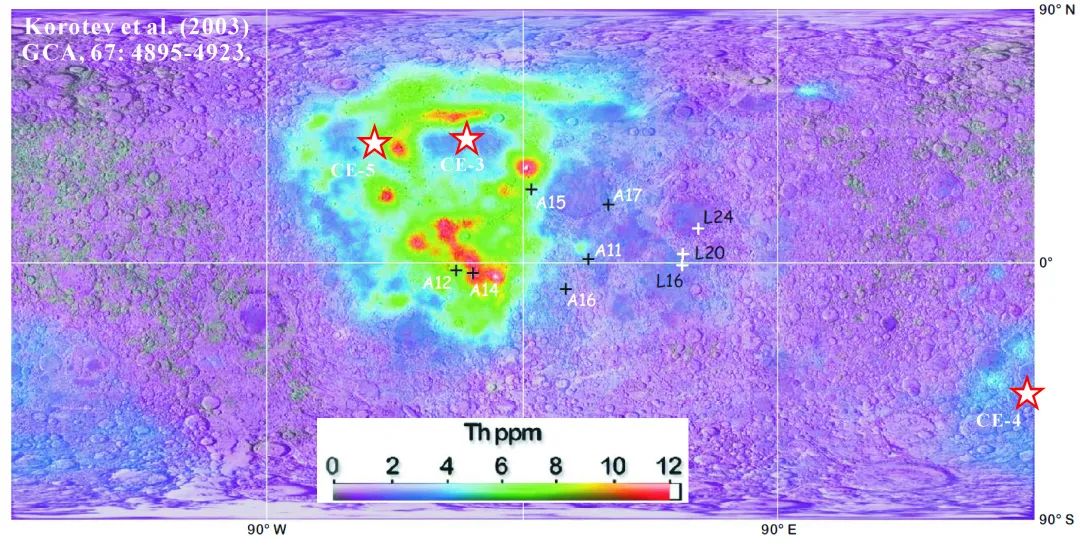
Figure 1 Local landing position map of the U.S. Apollo and Soviet Moon series (at the same time marked the location of the Chinese Chang'e project lander, the bottom map is based on Korotev et al., 2003)
Table 1 List of lunar samples collected by Apollo and Soviet Moon series (according to Ouyang Ziyuan, 2005)

While the United States successfully implemented the return of lunar samples, the Soviet Union successfully implemented three unmanned moon sample collection and return between 1970 to 1976 (Figure 1, Table 1). However, due to the small sample collection volume, the impact of the plan is inferior to the Apollo plan.
2 American Moon Sample Gift
American lunar sample gift
Moon samples are undoubtedly precious. In order to show the national strength of the United States and the achievements in the lunar exploration, the US President Richard Nixon in 1970 presented Apollo No. 11 to Apollo No. 11 to 135 countries and regions, 50 states and territories of the United States and the United Nations in the form of gifts. sample. The gift contains the flag of the gift, and the four-grain monthly moon granules (rocks or rock-glass sets, Figure 2), which are inlaid in the acrylic organic glass box, weigh about 50mg.送给世界各国和地区的礼品下方写有:“This flag of your nation was carried to the moon and back by Apollo 11, and this fragment of the Moon's surface was brought to Earth by the crew of that first manned lunar landing” (This flag of Guifang was brought to the moon by Apollo 11 and was brought back;

FIG
Due to the long time and the management system, it was difficult to find detailed records to the Apollo 11 samples from all over the world at that time. According to the "Wikipedia", both mainland China and Taiwan are being received. The gift to Taiwan, which was presented to Taiwan, was preserved in the "Central Research Institute" that was preserved in Taipei at the time. The Natural Science Museum currently preserved in Taichung (Lin Zhilong. 2018. You from the moon -the story of Yueyan specimen. , Issue 373, page 8). However, because the legitimate status of the People's Republic of China in the United Nations was restored at the 26th Conference of the United University on October 25, 1971, and China and the United States had not established diplomatic relations at the time. Therefore, whether the United States did give away the Moon Rock No. 11 in Apollo 11 in mainland China at that time, it was still a suspension. Later, we will also discuss this issue. There are currently few discussions about the attributes of the sample. Since the 4 small samples were placed in the Occobe organic glass, after receiving the sample, the gift was mainly collected and exhibited, and no research reports about these samples were seen. In the introduction later in this article, we will mention that the possible number of the sample is 10085.
In March 1973, the United States presented Apollo No. 17 samples to 50 states and 5 states in 135 countries and regions around the world. Different from the last time, this time was pressed in the apparel organic glass, which was about 1g of Xuanwu Rock blocks, which came from Gaotu Xuanwu Rock with 70017. Harrison Schmitt and Eugene Cernan collection (Figure 3). There are two paragraphs of the gift, the text above is: "This frame is a portion of a rock from the taurus littrow value of the moon. It is given as a symbol of the unity. The American People for A World At Peace "(the rock block comes from the moon Taurus Littrow Valley, which symbolizes the world peace that human unity and the hope of the American people's hope); Of your national carried to the moon aboard SpaceCraft America During the Apollo Xvii Mission, December 7-19, 1972 (this flag was brought to the month on December 7-19, 1972).
Figure 3 Apollo 17th Moon Xuanwu Rock Samples presented by the United States in 1973
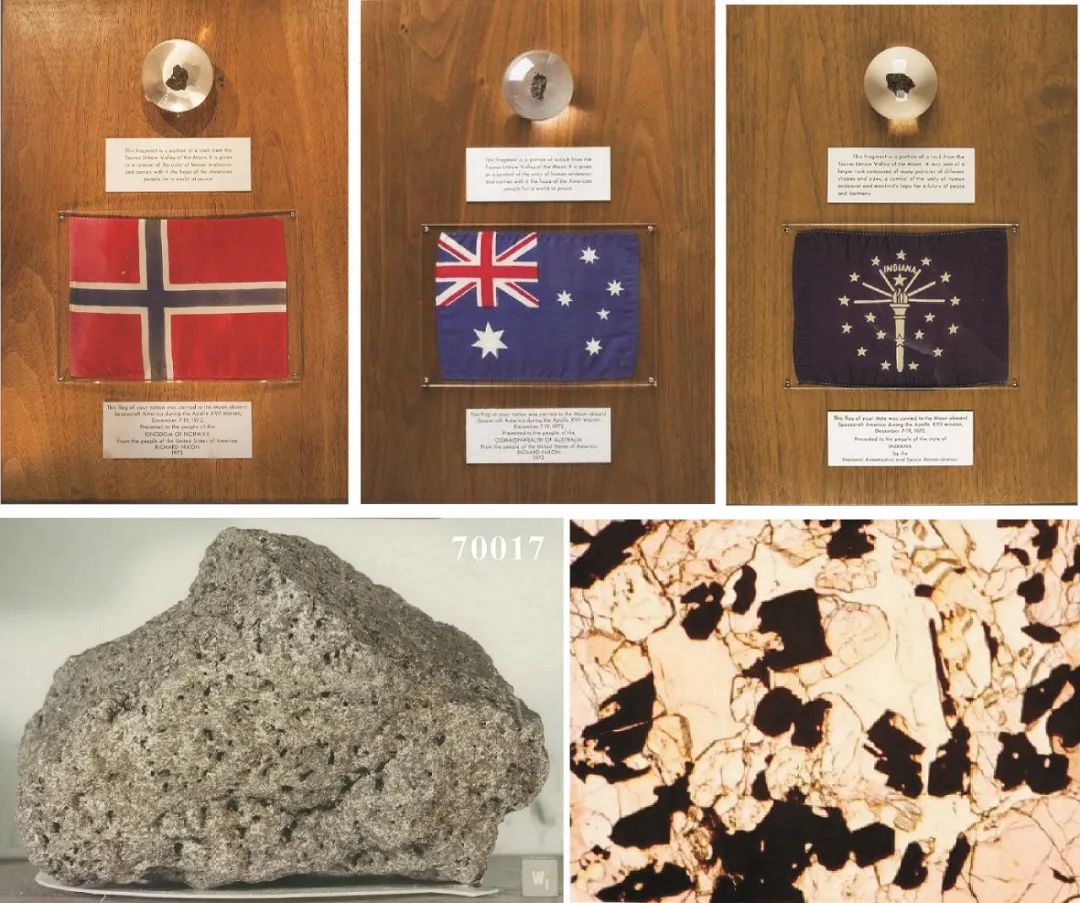
In the following gift catalogs, mainland China and Taiwan, China are also the objects of gifts. But so far, we have not seen any record of receiving this gift in Taiwan. Since China and the United States were officially established on January 1, 1979, gift gifts at the time in 1973 should not include mainland China.
From the above brief introduction, it can be seen that Taiwan has received the Apollo 11 Monthly Monthly Monthly Loa sample presented by the United States in 1970. However, due to the special political environment at that time, Beijing did not receive a large -scale Apollo 11 and 17 lunar sample gifts presented by the United States in 1970 and 1973.
3 Apollo moon samples currently collected by China
Apollo moon samples currently collected by China
Due to the limitations of information channels, how many monthly rock samples are there at present in China, we do not fully know. In addition to Apollo in the Taichung Natural Museum in China in November, Beijing also preserved at least two other Apollo moon samples.
3.1 Beijing Astronomy Museum Apollo 17 Xuanwu Rock
The Apollo 17 lunar samples in the Beijing Astronomical Museum have a high popularity in my country. The main reason is that the sample has been studied by Chinese scientists and published a series of academic papers. According to the narrative of Academician Ouyang Ziyuan (Ouyang Ziyuan, 2021), in May 1978, in order to promote the establishment of diplomatic relations between China and the United States as soon as possible, then the US presidential national security affairs assistant Zbigniew Brzezinski visited China and received it and received it. The reception of President Hua Guofeng. On behalf of President Carter Carter Carter, President Carter presented two gifts to President Hua Guofeng: the national flag of the People's Republic of China and a lunar rock embedded in organic glass. This soy-grain size, the Apollo moon sample with a weight of only about 1g was later transferred to the Chinese Academy of Sciences by the General Office of the State Council, and entrusted the Institute of Geochemistry of the Chinese Academy of Sciences to organize the comprehensive analysis of the "Apollo-17-291) monthly rock sample analysis Testing and researching the "Wang morality and Ouyang Ziyuan, 1981). After the task is completed, the remaining 0.5G basalt sample is stored in the Beijing Astronomical Museum (Figure 4) for science popularization exhibitions. Despite the limited research methods at that time, this was the first time that Chinese scientists' research on lunar samples had an important role in promoting the later lunar exploration and research in my country. Figure 4 Apollo in the Beijing Astronomical Museum in Apollo June Ball Xuanwu Rock
A detail that was not noticed by the public was that at that time, the national flag of the People's Republic of China when the Capirezinski presented Yueyan was not known now. The author believes that if this national flag can be exhibited at the same time as the sample, it will be more memorable. It should be noted that the Apollo 17 mission was executed in December 1972. China and the United States have not officially established diplomatic relations. Whether the national flag of the People's Republic of China is really taken to the moon by the Apollo 17 units, it still needs to carefully verify it. Essence
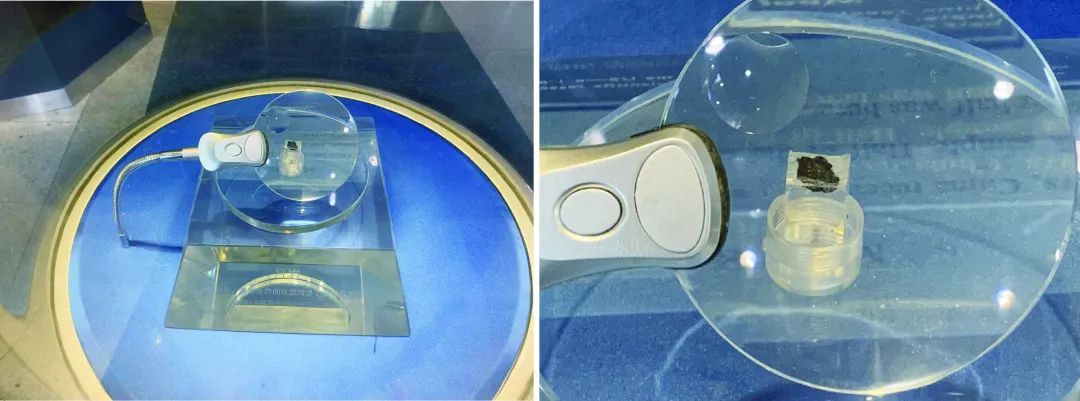
3.2 China National Museum Apollo December soil
Apollo 17 of the Beijing Astronomy Museum is not the only monthly sample preserved in Beijing. The National Museum of China exhibits a gift from President Nixon to Mao Zedong -the moon surface fragments and the US flag "(http://www.chnmuseum.cn/zpml/201812/t20181218_26743.shtml). It is said that when the exhibit was secretly visiting China in July 1971, when the US President's National Security Affairs Assistant Henry Alfred Kissinger secretly visited China, as a gift from President Nixon, Prime Minister Zhou Enlai presented to Chairman Mao Zedong. When Kissinger later visited China in 2013, he also took a picture before this gift (Dr. Kissinger came to the National Museum to visit again. National Bo Yue News, December 1, 2016). In the lower part of the gift, there is such a text: "This Flag Was Carried to the Moon and Back by Apollo 12. The frame of the Moon's Surface was brought to the crow of that manned Lunar Landing IN It is indicated that this is a sample from Apollo 12. It is worth noting that the US flag is given at the same time as the sample, not the Chinese flag (Figure 5).
Figure 5 Apollo December Sample displayed by the National Museum of China
Unlike the previous Apollo in the United States, the lunar sample in this gift is 7 small -granite rock fragments. What is not clear at present is how to determine the specific number of the above samples. Search the sample catalog collected by Apollo 12 and the research report (Warner, 1971) as of the present release, 12001 (2216g) and 12070 (1102G) are two most weighing and most mature moon soils. There are also many studies. Especially 12070, it is the most detailed sample in Apollo's 12th month.

3.3 Apollo on the Apollo in Parker in Parker in China
In addition to the two lunar samples with a clear history, when the Nixon visited China in 1972, it brought two special Parker golden writing ceremony. There is a small tablet on the pen, which is implanted with the monthly soil collected by Apollo 15, and the small board is engraved with the word "Traces of Lunar Material Apollo 15" (http://www.collectspace.com/resources/resources /profiles/profiles_parkerpens.html). These two pens were said to be given to Yao Wenyuan in Shanghai at that time and Nanping in Zhejiang Province. The author has never seen photos of this gift, nor has it been seen about the relevant official introduction. But Nixon did visit Shanghai and Hangzhou in 1972, and Shanghai and Zhejiang Province also held a welcome banquet for Nixon's visit. At that time, the director of the "Revolutionary Committee" of Shanghai and the first secretary of the Shanghai Municipal Party Committee was Zhang Chunqiao, but he lived in Beijing. Yao Wenyuan is the deputy director of the "Revolutionary Committee" and the second secretary of the Municipal Party Committee. He is the actual person in charge of Shanghai. Nan Ping was the first secretary of the Zhejiang Provincial Party Committee and the director of the "Revolutionary Committee" of Zhejiang Province. According to Tu Junjie's memories (Tu Junjie. 2012. Nixon's 21 hours in Hangzhou. Unpublished): "At 7 pm on February 26th, local leaders in Zhejiang Province for banquet Nixon's party ... After the banquet, the United States presented to the local leaders of Zhejiang Among them, there is a Picker pen with a rock brought back from the moon from the moon. " It seems that this legend has certain authenticity, but the current two pens are unknown. 4 Sample traceability of Apollo Moon Samples of Geological Earth Institute
Geological Earth Apollo Moon Sample traceability
Surprisingly, the Museum of Geology and Geophysics of the Chinese Academy of Sciences preserved another Apollo lunar sample (Lunar Dust, Figure 6). The sample is the museum collection of the Institute of Geological Research of the former Chinese Academy of Sciences. The sample is marked as "Lunar Dust", the origin of "American Apollo", and the collection time is "1971.5.26". Since this time does not conform to any Apollo mission, there is no clear statement about the life and specific nature of this sample. According to the memories of the museums who received this sample that year, this was a gift presented to the Chinese leaders by the US head of state transferred from the superior authority. However, since the "Cultural Revolution" was at that time, there was very little record information about this sample.
FIG
In order to unveil the secrets of this sample, the Institute of Geology and Geophysics of the Chinese Academy of Sciences conducted a comprehensive research on it to confirm that it was the March 11 of Apollo (Chen Yi et al., 2022; Li Qiuli et al., 2022; Tian Hengci; Tian Hengji Wait, 2022). The main evidence is as follows: 1) CT scanning image shows that the sample forms a mixed particle size, but the subject particle size is <1mm. There are characteristic rock blocks in the sample, and a large number of shock corner gravel, glass and small particles of metal substances with different shapes; 2) Selected larger rock particles in the sample for further studies. Its olives, graphite, and long stones all show the ingredients of the moon (Papike et al., 2003; Curran et al., 2019); 3) the whole rock composition of Xuanwu Rock particles was recovered, and it was found to be Gaoli Xuanwu rock. Combined with the specific content of Quanyan MGO and TIO2 and the facts with the high content of some rock chips K2O (Figure 7A), it can be determined that it is Apollo 11 Xuanwu Rock; He Xuanwu; 5) The PB-PB homogenin test of phosphorus and minented mineral particles in Xuanwu Block found that it has 3570mA, 3700mA, and 3850mA. Al., 1979; SNYDER et al., 1994; Snape et al., 2019); 6) Some aluminum rock crumbs were also found in the sample, according to its mineral composition (Figure 7B), it can be determined that it is rich in high ground rock rich rocks. Magnestes and oblique long rocks. Among them, the age of permone is 3900mA given by olty illegitic stones.
Figure 7 Moon Hai Xuanwu Rock (A, according to Meyer, 1987) and highland rocks collected by different tasks of Apollo (B, according to Jolliff et al., 1999; Wieczorek et al., 2006)

Therefore, the above -mentioned studies are pointing to the sample as Apollo November soil. After clarifying the attributes of the above samples, two problems need to be discussed. The first is the sample number; the second is how it came to the Institute of Geology, the Chinese Academy of Sciences at that time. Before discussing the first issue, we first need to understand the sample collection of Apollo 11 (LSPET, 1969; Kramer et al., 1977). On July 20, 1969, after Apollo 11 astronaut Neil Armstrong stepped down the hanging ladder, in order to prevent immediately returning to the spacecraft, he collected some samples near the 1.5m range of the spacecraft, and then put it in his own space service. middle. The sample is called the contingency sample (emergency sample), weighing 1015g. Among them, the rocks of & 10mm are numbered 10021-10032 (weight 523g), while <10mm's monthly soil is compiled 10010, weighing 492g. During the subsequent off -cabin activities, Armstrong randomly shovel the moon soil in a total of 22 to 23 positions, and placed it in a special sample bag that has been placed in large samples to prevent the mutual crowding between large samples and samples and samples. Touring, this is the famous BULK SAMPLE (ALSRC#1003, weighs 14897g). The stones of ALSRC#1003 sample bag were later numbered, and the fine particles were numbered 10002. Later, some samples were selected from 10002 for screening, and the fine grains were numbered to 10084 (3830g) and 10086 (823g). Essence Subsequently, Neil Armstrong collected Documented Sample on the other side of the spacecraft, and the astronaut Buzz Aldrin collected two drilling samples in the Bulk Sample collection area. These samples were placed in the sample bags of Alsrc#1004. The sample bag weighs 5923g, of which 403.5g of the fine -grained moon soil adhered to stone samples, most of these samples have not been carefully studied. Therefore, the main monthly soil samples of Apollo 11 are 10010, 100002, 10084, and 10086 (the latter three are actually the same samples). They are collected within 30m of the spacecraft landing area. The composition is basically the same (Korotev And gillis, 2001). However, because 10010 was attracted by magnets, the research of the sample was relatively small. The above <1mm 10084 weighs 3830g, and its basic composition is: 66%of the in place Xuanwu Rock, 5%red glass, 20%oblique long rock, 8%kreep rock and 1%meteorite. Its average particle size is 51 μm, and 14%of the particles are <10 μm. It is the most detailed monthly soil in Apollo samples (Papike et al., 1982), also known as "Reference Lunar Soil" (meyer C. 2009. 10084 . Lunar Sample Compendium). The sample 10085 weighs 569G, which is the part of ALSRC#1003 screening. It is also the first time that the United States has issued a research sample to global research institutions (Chao et al., 1970). In the cover of the Apollo 11 album released by the SCIENCE magazine in January 1970, the miniature impact pit distributed on the meteorite in the sample (Mason et al., 1970; Fredriksson et al., 1970; Goldstein et al ., 1970), it shows the strong impact on the moon or the effect of space weathering. Another important progress of the sample research is to discover oblique rocks from the moon highland, and then the famous lunar magma model/hypothesis (Wood et al., 1970) was proposed based on this. 10086 is used for organic matter experiments, and has been mistakenly affected by magnets, so there are few research reports of the sample. From this narrative, it can be seen that the 11 samples of Apollo from all over the world and regions in the United States are all 4 small particles, but the particle size is all & 1mm, which should be 10085. The sample should be from 10085. The granularity of the samples preserved by the geological earth should be the remaining fine particles when the coarse grains are divided out of 10085, that is, 10084. We look forward to further information can be confirmed or faked by the above speculation.
We have no clear answer about the source of samples. But the following details are worthy of our attention. First, the collection time of this sample is 1971.5.26. If this time is correct, whether the sample arrives in China or was delivered to the former Institute of Geology of the Chinese Academy of Sciences, it was earlier than the time when Kissinger visited China; second, as we described earlier, Kissinger When I secretly visited China on July 9, 1971, it was the December sample of Apollo in China. The purpose of Kissinger to China is to express the goodwill of the United States for the establishment of Sino -US diplomatic relations, and he should bring a sample of Apollo No. 11 with greater commemorative significance. Therefore, we speculate that the Apollo No. 11 sample was presented to the Chinese government by the United States before Kissinger's visit to China, and then was transferred to the Institute of Geological Research, the former Chinese Academy of Sciences. During the "Cultural Revolution", many geological and mineral samples presented by foreign heads of state to our country were transferred to the former Institute of Geology of the Chinese Academy of Sciences. At present, the museums in the institute have the exhibition of samples in this area. Third, the most important communication between China and the United States before visiting China should be "ping -pong diplomacy". From April 10th to 17th, 1971, the American Table Tennis delegation visited China at the 31st World Table Tennis Championships held in Nagoya, Japan. The delegation was the first American to enter mainland China since the founding of the People's Republic of China in 1949. It opened the door to China -US exchanges that had been closed for 22 years. The leaders of China and the United States attach great importance to this visit. We speculate that it was this table tennis team that the US government presented 11 samples to Apollo in China to show the desire to improve the relationship between the two countries. Due to the invitation to visit China on April 7, the United States is obviously too late to make more delicate gifts. It was also due to the influence of bilateral political atmosphere at the time, and the gifts of this time did not leave too many file records. We look forward to the speculation of future decryption confirmation or falsification. But in any case, this Apollo 11 sample may imply some important events in China and the United States. 5
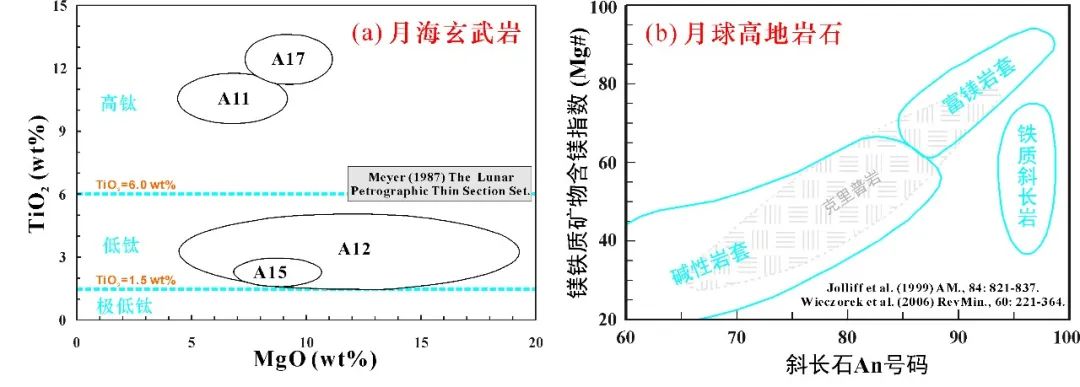
Conclusion: The scientific significance of different types of moon samples
It can be seen from the above narrative that there are currently many monthly samples such as Apollo 11, 12, 15, and 17 in my country (Table 2). Except for the landing of 15 samples from Apollo presented by Nixon in 1972, other sample preservation locations were clear. Among the 4 pieces of saved information, Apollo samples, Apollo Granules, Apollo in the Taichung Natural Sciences Museum, Apollo in the National Museum of China in December, and Apollo 17 Xuanwu Rock preserved by the Beijing Astronomical Museum, all of which are all. Clear rock crumbs (& 1mm). Because their gift attributes are clear, they are suitable for long -term exhibitions and used for science education.
Table 2 List of Chinese Collection of Apollo Moon in China
However, the Apollo in the Institute of Geology and Earth Physics of the Chinese Academy of Sciences is different from other samples in November. At present, research shows (Chen Yi et al., 2022; Li Qiuli et al., 2022; Tian Hengci et al., 2022), the month of the month is mainly composed of <1mm fine -grained minerals and rock debris. The fifth moon soil is basically similar, but the nature of the specific rocks inside, the history of the moon evolution is completely different. Due to the collection of comparison of the two monthly soil samples of Apollo 11 and Chang'e 5, the above -mentioned Apollo 11 and Chang'e 5 have high scientific value to explain the formation and evolution of the moon.
Thank you
Before Chang'e -5 returned to the moon sample, the author took it for granted that the Apollo 17 Xuanwu Rock in the Beijing Astronomical Museum was the only moon sample preserved in my country. The emergence of the moon samples of the Museum of Geological Earth has made us began to pursue the situation of the existing Apollo moon samples in my country. Thanks to Yin Qingzhu, Hui Hejiu, Lin Yang Ting, Yang Wei, Yang Xiangzhang, etc. of the information provided by the sample tracking process and the help given. The lunar research team led by Li Xianhua provides the summary of the research on the research of the moon's soil samples in the Geological Earth, thanks!
Main references (sliding look)
BeatyDW, Hill SMR, Albee AL, Ma MS and Schmitt RA. 1979. The petrology and chemistry of basaltic fragments from the Apollo 11 soil, part I. In: Proceedings of the 10thLunar and Planetary Science Conference. Houston, 41-75
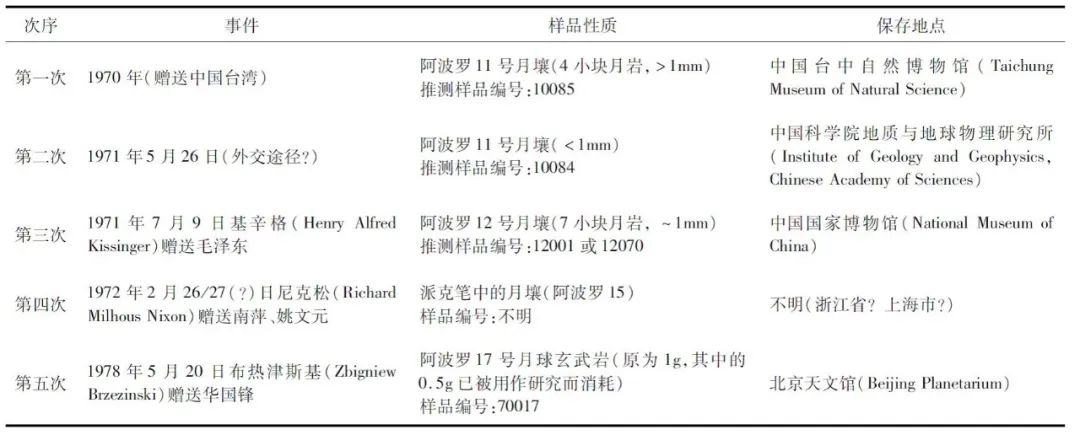
ChaoECT, James OB, Minkin JA, Boreman JA, Jackson ED andRaleigh CB. 1970. Petrology of unshocked crystalline rocks and evidence of impact metamorphism in Apollo 11 returned lunar sample. In: Proceedings ofApollo 11 Lunar Science Conference. U.S. Geological Survey, 287- 314chen y, Wang ZL, Yuan Jy, JIA LH, ZHANG D, li XG, yang W, Li Ql andli XH. 2022. Tracing the source of apollo lunar sOIL (E21): Petrology (E21). : 1811-1822 (in Chinese with English abstract)
Curran NM, Joy KH, Snape JF, Pernet-Fisher JF, Gilmour JD, Nemchin AA, Whitehouse MJ andBurgess R. 2019. The early geological history of the Moon inferred from ancient lunar meteorite Miller Range 13317. Meteoritics Planetary Science, 54(7 ): 1401-1430
Fredriksson K, Nelen J, Melson WG, Henderson EPand Andersen CA. 1970. Lunar glasses and micro-breccias: Properties and origin. Science, 167(3918): 664-666
Goldsteinji, Hendern EP Andyakowitz H. 1970. Investigation of Lunar Metal PARTICS
Jolliff BL, Floss C, McCallum ISandSchwartz JM. 1999. Geochemistry, petrology, and cooling history of 14161, 7373: Aplutonic lunar sample with textural evidence of granitic-fraction separation by silicate-liquid immiscibility. American Mineralogist, 84(5-6) : 821-837
Korotev rl andgillis jj. 2001. a new look at the apollo 11 regolith and kreep. Journal of Geophysical Research: Planets, 106 (E6): 12339-12353
Korotev RL, Jolliff BL, Zeigler RA, Gillis JJ andHaskin LA. 2003. Feldspathic lunar meteorites and their implications for compositional remote sensing of the lunar surface and the composition of the lunar crust. Geochimica et Cosmochimica Acta, 67(24): 4895- 4923
Kramer FE, Twedell DB andWalton Jr WJA. 1977. Apollo-11 lunar sample information catalogue (Revised). Houston: NASA Johnson Space Center, 454Li QL, Liu Y, Li JH, Chen Y andLi XH. 2022. Identification and new discovery to The Apollo 11 Lunar SOIL USING SIMS U-PB Analyses. Acta Petrology Sinica, 38 (6): 0000-0000 (in Chinese with English abstract)
LUNAR SAMPLE Preliminary Examination Team (LSPET).
MasonB, Fredrikson K, Henderson EP, Jarosewich E, Melson WG, Towe Kmandwhite JR JS. 1970. Mineralogy and Petrography of Lunar Samples. Science, 167 (3918): 656-6599: 656-6599
Meyerc. 1987. LUNAR PETROGRAPHIC Thin Section Set. Nasa Johnson Space Center, 61
Ouyang zy. 2005. Intropuction to Lunar Science. Beijing: China Aerospace Publicivity House, 1-280 (in Chinese)
OUYANG ZY. 2021. Exploring the Earth and University: AutobioGraphy of Ouyang Ziyuan. Beijing: Encyclopedia of China Publicish House, 1-61 (in Chinese)
Papike jj, Simon Sb and Laul Jc. 1982. The Lunar Regally: Chemistry, Mineralogy, and Petrology. Reviews of geophysics
Papike jj, karner jm andShearerer CK. 2003. Letter. Determination of planetary basalt painage: a simple technique user.
Snape JF, Nemchin Aa, Whitehouse MJ, Merle Re, Hopkinson T Andanand M. 2019. The Timing of Basaltic Volcanisms at the Apollo Landing Sites.
Snyder GA, Lee DC, Taylor LA, Halliday AN andJerde EA. 1994. Evolution of the upper mantle of the Earth's Moon: Neodymium and strontium isotopic constraints from high-Ti mare basalts. Geochimica et Cosmochimica Acta, 58(21): 4795- 4808
Taylor SR. 2019. The Moon: A personal recollection and memorial for Professor Lawrence A. Taylor, an Apollo stalwart. Geochimica et Cosmochimica Acta, 266: 9-16Tian HC, Hao JL, Xu YC, Yang W, Hu S, Zhang C , Lin yt, li xh and wu fy. 2022. Solar Wind-IMPLANTED WATER in Apollo 11 Lunar Soils and its implications. Acta Petrologica Sinica, 38 (6): 1823-1831 (In Chinese with)
Wang dd Andouyang Zy. 1981. A Preliminary Study on Chemical Composition and Genesis of Apollo 17 High-Ti Mare Basalt. Geochimica, (4): 365-372 (In Chinese With English Abst)
Warnerj. 1971. Apollo 12 Lunar Sample Information. NASA Technical Report, R-353, 377, 377
Wieczorek Ma, Jolliff Bl, Khan A, PriceChard Me, Weiss BP, Williams Jg, Hood Ll, Righter K, Neal CR, Shearer CK, McCallum is, TOMPKINS S, Peterson C, Gillis JJ ANDB ANDB ANDB ANDB ANDBOARLAOAOAOAOationAAAAAAAAAAAAAationA. constitution and structure of the Lunar Interior. Reviews in Mineralogy Geochemistry, 60: 221-36444
Wood JA, DICKEY JS, Marvin Ub Andpowell Bn. 1970. Lunar Anorthosites. Science, 167 (3918): 602-60444
Chinese reference
Chen Yi, Wang Zeling, Yuan Jiangyan, Jia Lihui, Zhang Di, Li Xiaoguang, Yang Wei, Li Qiuli, Li Xianhua. 2022. Apollo Moon Royal Sample (E21) Rock Study and Source.
Li Qiuli, Liu Yu, Li Jinhua, Chen Yi, Li Xianhua. 2022. ion probe U-PB system research and identifying the month of Apollo No. 11 and new discovery.
Ouyang Ziyuan. 2005. Moon Science Introduction. Beijing: China Aerospace Press, 1-280
Ouyang Ziyuan. 2021. Ouyang Ziyuan Autobiography: Seeking the heavens and the earth. Beijing: China Encyclopedia Press, 1-61
Tian Hengci, Hao Jialong, Xu Yuchen, Yang Wei, Hu Sen, Zhang Chi, Lin Yang Ting, Li Xianhua, Wu Fuyuan. 2022. Apollo November Sample in the soil sample of the solar style. -1831
King's morality, Ouyang Ziyuan, 1981. Apollo-17 (70017-291) The chemical composition and discussion of the chemical composition and cause of Gaotongyue Haixuan Wuyan. (4): 365-372
Beautiful editor: Han Yatong
School pair: Liu Qiang

- END -
Xinhua All -Media+| From "Sand Jinren" to "Green into the sand and retreat": More than half of our country can manage sandy land to be treated
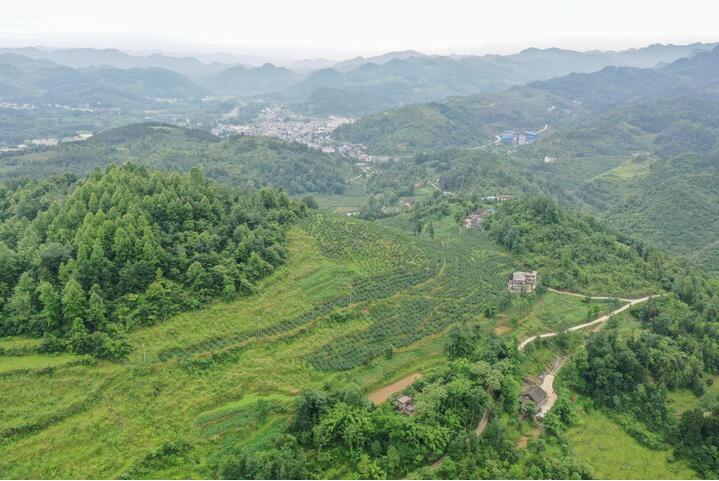
Xinhua News Agency, Beijing, June 17 (Reporter Hu Lu) June 17 is the 28th world to...
Is the quantum measurement problem a question?
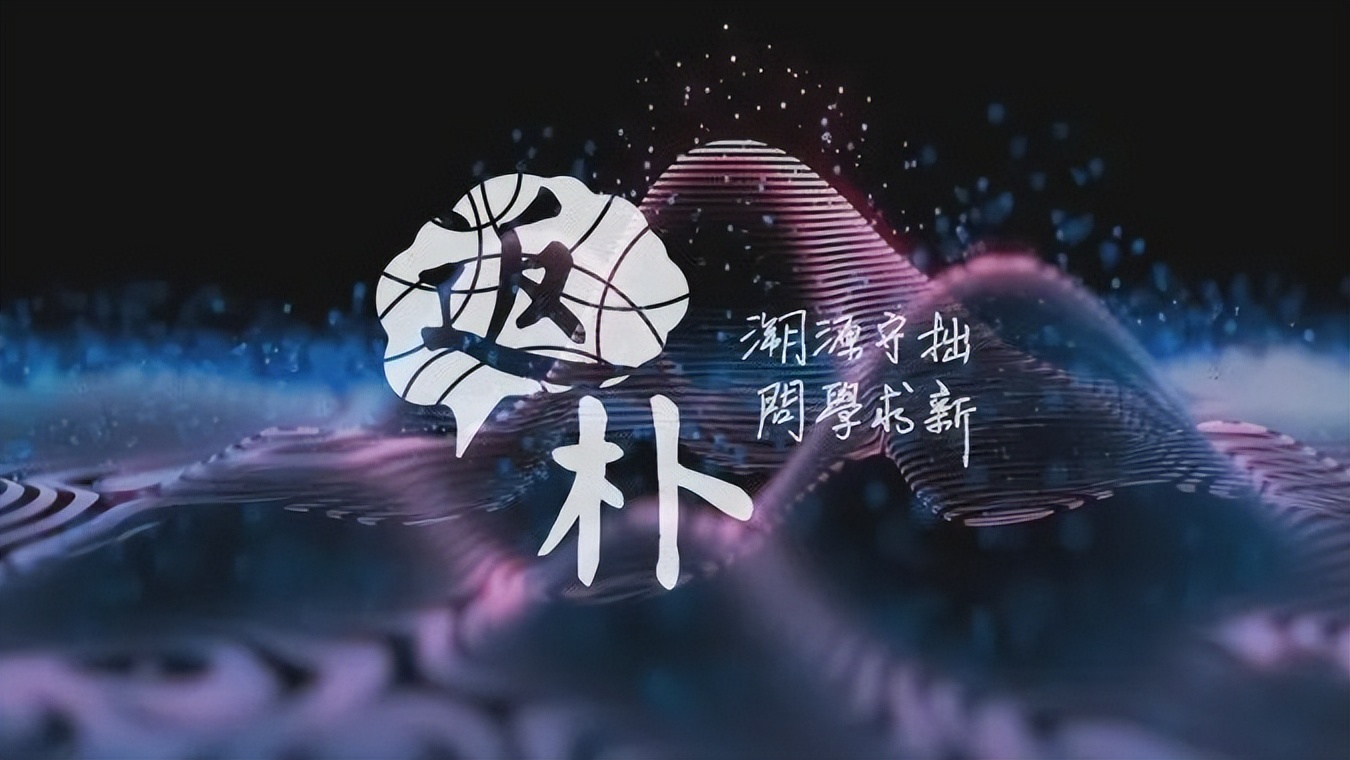
The problem of quantum measurement is an unavoidable problem in the development of...